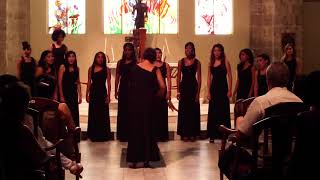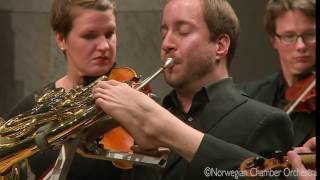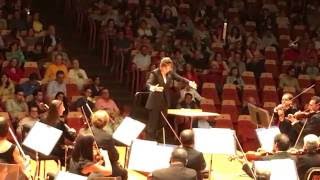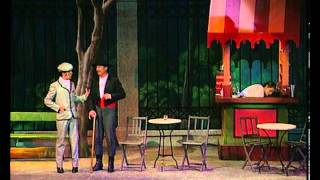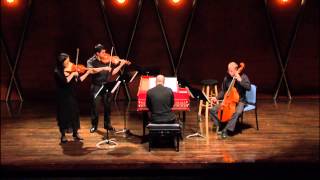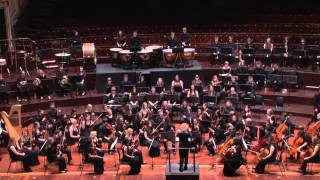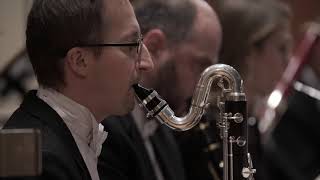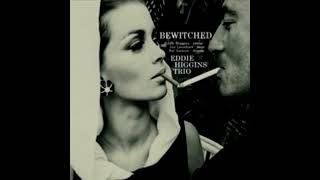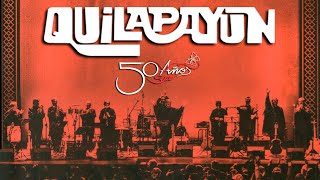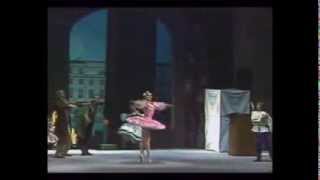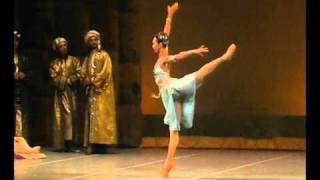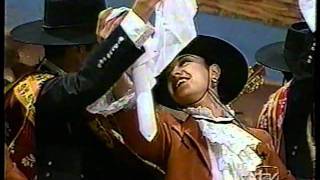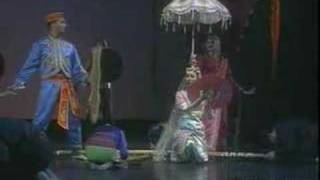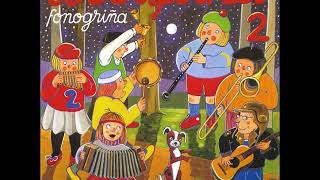Recommended music videos for initiation to classical music
Maddalena Casulana (c. 1544 – †1590) was an Italian composer, lute player, and singer of the Late Renaissance . She was the first woman composer to have an entire volume exclusively of her music printed. Very little is known of her life beyond what can be inferred from the dedications and writings in her madrigal collections. She was possibly born in Casole d'Elsa , Italy , near Siena , in keeping with her surname. To date, 66 of Casulana 's madrigals have survived; her musical style is moderately contrapuntal and chromatic, and her melodic lines are cantabile and carefully respectful of the text. The following quote appears in the dedication of his first book of madrigals, to Isabella de Médicis : "I wish to show the world, as much as I can in this musical profession, the erroneous vanity that only men possess the gifts of art and intellect, and that these gifts are never given to women."
The madrigal is a composition for three to six voices on a secular text, often in Italian. It had its peak in the Renaissance and early Baroque periods . Musically it recognizes origins in the frottola , has lyrics in Italian with secular themes, contrapuntal harmony, and a popular character; composed mostly for a cappella voices , and in some cases with instruments doubling the vocal parts. The madrigal was the most important secular musical form of its time, which flourished especially in the second half of the 16th century , losing its importance around the third decade of the 17th century , when it faded through the growth of new secular forms such as the opera, and merged with the cantata .
Today we present the madrigal Stavasi il mio bel sol written by Maddalena Casulana for three equal voices performed by the Luna Vocal Ensemble conducted by maestro Wilmia Verrier .
Wolfgang Amadeus Mozart (1756-1791) is considered one of the three giants of musical composition, along with Bach and Beethoven . A child prodigy born in Salzburg , he mastered the keyboard and violin at the age of six and began composing. His father, Leopold , exhibited him on exhausting tours of various European courts. A prolific composer (more than 600 works written from the age of five until his death), he cultivated all kinds of musical genres: piano works, chamber music, symphonies, concertante works, choral works, operas... each and every one of them a masterpiece of their kind. His operas The Magic Flute, Don Giovanni, Così fan Tutte, and The Marriage of Figaro are among the 10 most performed operas in the world. He died in Vienna at the age of 35.
The catalogue of Mozart's works or Köchel Catalogue ( Köchel Verzeichnis, in German) was created by Ludwig von Köchel in 1862 and lists the musical works composed by Wolfgang Amadeus Mozart . Each of Mozart 's works is designated by a number preceded by the abbreviation K. or KV ; this number designates the chronological order of its creation and which is actually valid for most of the works; however, in its first edition, works by other authors appear erroneously attributed to Mozart , and other authentic works that had not yet been discovered are omitted.
Felix Klieser is a German professional horn player who was born without arms and plays the horn using his left foot to operate the valves and without placing a limb inside the bell, a contrast to the traditional way the instrument is played. This young man has earned critical and public acclaim thanks to his spectacular playing talent, which has allowed him to excel worldwide, proving once again that a disability does not cut short dreams. He was awarded the ECHO Classic Award for Best Young Artist in 2014, published an autobiographical book, and in 2016 received the Leonard Bernstein Prize from the Schleswig-Holstein Music Festival. (Excerpt from an article in Mundiario)
Today, accompanied by the Norwegian Chamber Orchestra , he offers us the Third Movement of WA Mozart's Concerto No. 2 for Horn and Orchestra .
Dmitri Shostakovich (1906-1975) is one of the most renowned composers of the 20th century , who had to adapt to the political status quo with which he lived. His music was sometimes denounced as decadent and reactionary, and at other times, praised by the CPSU as representative of the new socialist art. In public, he always appeared loyal to the system and held important responsibilities in artistic institutions, accepting to belong to the CPSU in 1960 and becoming a member of the Supreme Soviet . He wrote fifteen string quartets, fifteen more symphonies, six concertos, several operas, as well as film and ballet music. His music stands out for its relevant contrasts and original rhythmic aspects, which underlie an energetic, sometimes burlesque character.
Waltz No. 2 from Jazz Suite No. 2 is known and will surely continue to be known for centuries as Waltz No. 2 from Jazz Suite No. 2, both works being falsely named. The waltz was popularized by Stanley Kubrick in his film Eyes Wide Shut , and belongs to a much later work called Suite for Variety Orchestra , which is in fact a collection of pieces from other works, mainly soundtracks, compiled by Shostakovich after 1956. It is in this suite, and not in Jazz No. 2, that our well-known Waltz No. 2 should be framed, as it came from a 1955 film directed by MK Kalatozov entitled The First Step .
The version we offer today is conducted by Elim Chan (1983), a Chinese conductor currently principal conductor of the Antwerp Symphony Orchestra.
Federico Chueca (1846-1908) was born in Madrid , in the Plaza de la Villa , into a wealthy family. He received music theory classes from primary school, which he attended at a select school, but his family forced him to abandon music to study medicine. Barbieri helped him orchestrate and conduct his works, and his great success convinced Chueca to abandon medicine and dedicate himself to music. He is considered a self-taught musician with an innate talent and a grace with melody and rhythm, which led him to compose extraordinary musical pieces. He worked with several collaborators, but especially with Joaquín Valverde , on many of his works. He is currently considered one of the greatest exponents of the género chico (one-act zarzuelas).
Zarzuela is a form of theatrical music or stage musical genre that emerged in Spain , which is distinguished mainly by containing instrumental parts, vocal parts (solos, duets, choruses ...) and spoken parts, although there are exceptions in which the spoken parts are completely absent. The term "zarzuela", applied to the musical and theatrical genre, comes from the Palace of Zarzuela , a Spanish royal palace located near Madrid and which housed the theater that housed the first performances of the genre. Due to its spoken parts, zarzuela has been wrongly assimilated to operetta ; but historically, zarzuela is much older and is more like the Spanish equivalent of the French opéra-comique or the German singspiel . Mozart 's The Magic Flute , for example, is not an opera but a singspiel . Therefore, Zarzuela would be defined in a more appropriate and simpler way as the lyrical and performing art that is truly Hispanic, since although it was born in Spain , shortly after its appearance it spread to almost the entire Hispanic world.
Water, Sugars and Brandy is a one-act zarzuela (genre chico) with a libretto by Miguel Ramos Carrión and music by Federico Chueca . It premiered at the Teatro Apolo in Madrid on June 23, 1897. The work remained at the Apolo and then during the summer moved to the Teatro Príncipe Alfonso ; in mid-September it returned to the Apolo . It reached two hundred performances without interruption. In 1897, with the hundredth performance, a tribute was paid to its authors Chueca and Ramos Carrión . For years it remained on the billboards of other theaters in Spain and Latin America , becoming part of almost all lyrical repertoires. It is one of the works that best represent the genre chico .
The libretto is set in Madrid in the late 19th century , and the music supports this setting with rhythms familiar and beloved by audiences, such as the pasacalle, the waltz, the mazurka, the seguidillas, the jota, and even children's and popular songs. The characters featured are figures of the era, faithfully portraying Madrid at that time, giving way to realistic and traditional situations; while the plot revolves around an economic entanglement in which the protagonists are unwittingly involved. The central character of the plot is Aquilino , a businessman, owner of cheap rental apartments, and a moneylender.
Recommended classical music videos
Arcangelo Corelli (1653-1713) was an Italian Baroque violinist and composer. Born in Fusignano (province of Ravenna), he studied violin in his hometown from childhood. In 1666, he traveled to Bologna , where he studied with Giovanni Benvenuti and Leonardo Brugnoli . Five years later, he settled in Rome , where he achieved extraordinary fame as a violinist, while also perfecting his compositional technique. By 1700, he was already first violinist and director of concerts at the Chancellery Palace , and in 1706 he entered the Arcadia Academy . Today he is considered one of the greatest precursors of the preclassical sonata and the quintessential representative of the concerto grosso . His music had a great influence on German composers, especially Bach and Handel .
Catalogue of Corelli's works . His works are classified by their Opus number (from the Latin opus 'work'; op. abbreviation), which is a term used in music to catalogue the works of most composers since the 17th century .
The trio sonata is a recurrent musical form during the Baroque period and probably the most popular instrumental genre between the late 17th and early 18th centuries , written for three voices, usually two of them for violins and the third for basso continuo . The basso continuo is played by one or more instruments: a polyphonic and harmonic instrument (that is, capable of producing chords or polyphony) such as keyboard instruments (harpsichord, pianoforte, harpsichord, organ) or others such as the harp and the lute, with the bass voice simultaneously played by a low-range instrument such as the cello, the viola da gamba, the double bass or the bassoon.
Today we offer the Trio Sonata in D major, Op. 3 No. 2 by Arcangelo Corelli , performed by Chayong Lee (violin 1), Julian Tello Jr. (violin 2), Stuart Cheney (viola da gamba: basso continuo), Joseph Butler (harpsichord: basso continuo); the sonata is structured in four movements: I (0:08) GRAVE - II (2:09) ALLEGRO - III (3:32) ADAGIO - IV (5:32) ALLEGRO.
Wolfgang Amadeus Mozart (1756-1791) is considered one of the three giants of musical composition, along with Bach and Beethoven . A child prodigy born in Salzburg , Austria, he mastered the keyboard and violin at the age of six and began composing. His father, Leopold , exhibited him on exhausting tours of various European courts. A prolific composer (more than 600 works written between the age of five and his death), he cultivated all kinds of musical genres: piano works, chamber music, symphonies, concertante works, choral works, operas... each and every one of them a masterpiece of their kind. His operas The Magic Flute, Don Giovanni, Così fan Tutte, and The Marriage of Figaro are among the 10 most performed operas in the world. He died in Vienna at the age of 35.
The catalogue of Mozart's works or Köchel Catalogue ( Köchel Verzeichnis, in German) was created by Ludwig von Köchel in 1862 and lists the musical works composed by Wolfgang Amadeus Mozart . Each of Mozart 's works is designated by a number preceded by the abbreviation K. or KV ; this number designates the chronological order of its creation and which is actually valid for most of the works; however, in its first edition, works by other authors appear erroneously attributed to Mozart , and other authentic works that had not yet been discovered are omitted.
Così fan tutte, ossia The School of Lovers is a comical drama in two acts with music by Wolfgang Amadeus Mozart and an Italian libretto by Lorenzo da Ponte . Così fan tutte is one of three Mozart operas for which da Ponte wrote the libretto. The other two collaborations were The Marriage of Figaro and Don Giovanni . The literal translation of the title is "So do they all (women)"; these words are sung by the three men when they speak of fickle female love, in Act II, Tableau III , just before the Finale . Musically speaking, critics highlight the symmetry of Così : two acts, three men and three women, two couples, two characters at the extreme (Don Alfonso and Despina), practically the same number of arias for all the soloists.
The version we present today is musically conducted by the Austrian maestro Nikolaus Harnoncourt .
Hector Berlioz (1803-1869) was a French composer, a leading figure in programmatic music and Romanticism in general. His father, a doctor, sent him to Paris to study medicine; but he abandoned medicine and enrolled at the Paris Conservatoire , where he studied composition. From there, he went to Rome , where, while on a scholarship, he wrote several operas, symphonies, overtures, various songs, and choral works. He was inspired by the hymns of his teacher, Jean-François Lesueur , and closely imitated Beethoven , then unknown in France ; also Gluck, Mozart, Étienne Méhul , and Carl Maria von Weber. In 1844, he composed the first known work for saxophone, the sextet Sacred Chant , which premiered under the baton of Berlioz himself and with Adolphe Sax on saxophone.
Fantastic Symphony, Op. 14 , subtitled Episode from the Life of an Artist , consists of five movements: I (0´03´´) DREAMS AND PASSIONS, describes the anxiety produced by the protagonist before meeting his beloved; later, the volcanic love that she inspires in him. Towards the end of this movement, we perceive a contrast between the passion produced by the protagonist and the disconsolation for the rejection .-. II (13´28´´) A DANCE, the reunion with the beloved takes place after the rejection, at a dance. The music then adopts the tempo of a waltz, thus describing the protagonist's anxiety. The “fixed idea” appears briefly interrupting the waltz, reappearing at the end of the movement .-. III (20´09´´) SCENE IN THE COUNTRYSIDE . It describes two shepherds, represented by the duo formed by the English horn and the oboe, enjoying a wonderful summer afternoon. Towards the middle of the movement, the beloved appears and is invaded by terrible forebodings. At the end, the English horn reappears, evoking the pastoral theme again and ending with a timpani roll that creates a mysterious atmosphere .-. IV (35:25) THE MARCH TO THE GALLOW. The musician dreams that he has killed his beloved and, therefore, is condemned to the guillotine to be executed; in that moment he remembers the feeling of love for the last time. The march is based on two main themes, each played by the strings and the winds. The movement ends with drum and timpani rolls along with chords played by the brass that symbolize the power of justice .-. V (40:30) A WITCH'S NIGHT'S DREAMS. The protagonist witnesses his own funeral, surrounded by witches and spirits, among whom he sees his beloved transformed into a harpy. The Dies Irae (a 12th-century Gregorian chant melody from the Requiem ) is introduced into the play along with the witches' round, accompanied by the ringing of bells. (Excerpt from Digital melomano).
Richard Blackford, born in London on 3 January 1954, studied composition with John Lambert at the Royal College of Music and conducting with Norman Del Mar. He was awarded the Mendelssohn Scholarship and the Tagore Gold Medal . He spent several years as an assistant to Hans Werner Henze in Italy on a Leverhulme Fellowship , where he received his first commissions while immersed in the European avant-garde. He returned to London in 1977 to focus on the dramatic potential of music; in total, he has composed four operas, two musicals, much concert music, and the scores for over two hundred films. He was nominated for an Emmy Award in 2001 for Outstanding Achievement in Music . 2011 saw the premiere of Not In Our Time , a 55-minute choral and orchestral work commissioned from Blackford to mark the centenary of the Bournemouth Symphony Chorus . In 2014, Blackford collaborated with natural soundscape recordist Bernie Krause to compose the Great Animal Orchestra Symphony . The work combines traditional orchestral sounds with recordings of gibbons, humpback whales, Pacific tree frogs, mountain gorillas, beavers, and the wood-crested wren. In January 2019, he was awarded a Doctor of Philosophy degree by the University of Bristol .
Today we present Richard Blackford 's Violin Concerto, Niobe , with the same performers as the day of its 2017 premiere; soloist Tamsin Waley-Cohen on violin, accompanied by the Czech Philharmonic conducted by Maestro Ben Gernon .
Recommended music videos for all tastes
Eddie Higgins (1932–2009) was an American jazz pianist, composer, and arranger. He was born and raised in Cambridge, Massachusetts. He initially studied privately with his mother. He began his professional career in Chicago, Illinois, while studying at Northwestern University School of Music . There he developed into an elegant and sophisticated pianist. His encyclopedic harmonic approach and the breadth of his repertoire made him one of the most distinctive jazz pianists to come from Chicago , earning him local respect and touring with prestigious musicians for his remarkable artistry. For over two decades, Higgins worked in some of Chicago 's most prestigious jazz clubs . His longest and most memorable tenure was at the London House , a jazz club where he led his jazz trio from the late 1950s to the late 1960s, playing with jazz stars of this golden period. In 1988, Higgins and jazz singer and pianist Meredith d'Ambrosio married and became a popular duo at clubs and festivals. In 2009, a tour of Japan and South Korea was scheduled to be canceled due to his illness, from which he ultimately died in Fort Lauderdale at the age of 77.
Izaro Andrés Zelaieta (1993), Izaro , is a Basque singer and songwriter, born in Mallabia , Bizkaia . She began her studies in San Sebastián , but interrupted them to go to the United States . Upon her return, and combining this with the publication of her first songs, she graduated in Communication from the University of Deusto in 2016. The first song she composed and with which she became known was Paradise and in 2017 her first LP, Om , was released with songs in Basque, English and Spanish and that same year she released a collection of EPs in Basque called Hankapuntetan . In 2018 she released her second album entitled Eason at the Arriaga Theater in Bilbao . Her work, Limones en invierno was published in 2020 with 10 multilingual songs.
Today we offer the concert offered by Izaro in Donostia for the EiTB program "Lau hiriburu, lau kontzertu" in August 2021.
Quilapayún ( from the Mapundungun kila, 'three', and payún, 'beards' ) is a Chilean folk music band formed in Santiago on July 26, 1965, which was part of the so-called New Chilean Song during the 1960s and which remains active to this day. During the government of Salvador Allende they were appointed cultural ambassadors, touring Europe and achieving great success in Argentina and Uruguay . Quilapayún was on tour in Europe when Augusto Pinochet 's coup d'état occurred; after the coup, the group remained in France and began their exile, which would last indefinitely. After the normalization of Chilean politics and the return of its members, they split into two groups due to internal dissent.
Julieta Venegas Percevault (California, 1970- ) is a Mexican singer, songwriter, multi-instrumentalist and activist. Throughout her career she has won a Grammy Award , nine Latin Grammy Awards , seven MTV Awards , seven Broadcast Music Inc , eight VEVO Certifie d, three Oye! Awards , and two Billboard Music Awards . She has also been awarded the prestigious " Master Of Latin Music Award Berklee College " for her lifetime achievement, and a " Musa Awards Elena Casals " in honor of her contributions as a composer. She plays 15 instruments, but mainly plays the piano, guitar and her characteristic accordion, having made multiple collaborations with Latin artists, endúos and compositions and made the soundtrack for dozens of films. In 2009, she was named a "Goodwill Ambassador" by UNICEF Mexico and in 2011, a Cultural Goodwill Ambassador by the Council of Ministers of Women of Central America (COMMCA).
Recommended peculiar videos
Josef Bayer (1852-1913) was an Austrian composer, conductor and violinist. He studied at the Vienna Conservatory with Josef Hellmesberger, Otto Dessoff and Anton Bruckner . From 1870 he was a violinist in the orchestra of the Vienna Court Opera . He composed mainly ballets (about twenty of them) as well as operettas, dance scenes and other musical pieces. His first success was the ballet Viennese Waltz (1885), although his best-known work is The Fairy Doll ( Die Puppenfee , 1888), which is still performed annually at the Vienna State Opera . In 1901 he completed Johann Strauss 's ballet Cinderella , which he had left unfinished due to his death in 1899, despite criticism from Gustav Mahler , who believed that it distorted Strauss 's work. He was also the author of several operettas, such as The Knight of St. Mark (1882), Lord Menelaus (1896), The Commissioner (1904) and Duel of Women (1907).
The Fairy Doll premiered at the Vienna Court on 4 October 1888 as Die Puppenfee . This ballet is also based on the 1815 story The Snowman by E.T.A. Hoffmann with music by Josef Bayer choreographed by Joseph Hassreiter , and a pas de trois choreographed by Legat was later inserted. The ballet tells the story of a doll shop which, at dusk, becomes magical and the dolls come to life. Until a child is forgotten in the shop and witnesses everything that happens inside. The ballet features dolls such as: Baby, Spanish, French, Chinese, Japanese, Balloon Doll and the Fairy Doll , who is the cause of the magic. The child then falls in love with the doll. The ballet ends in the morning when the shop owners appear and witness the farewell of the dolls and the child.
Today it is offered to us by the Vaganova Ballet Academy .
Edvard Grieg (1843-1907) was a Norwegian composer and pianist, considered one of the main representatives of musical Romanticism. His mother, Gesine , was his first piano teacher; later, he met the legendary Norwegian violinist Ole Bull , a family friend and his mother's brother-in-law. Grieg adapted many themes and songs from Norwegian folklore, thus contributing to the creation of a Norwegian national identity, as Jean Sibelius did in Finland or Antonín Dvořák in Bohemia . His most important works are: the Piano Concerto in A minor , the intimate Lyric Pieces (for piano), the Holberg Suite (for string orchestra) and, especially, Peer Gynt, incidental music he wrote at the request of the writer Henrik Ibsen for his drama of the same name.
Peer Gynt, Opus 23, is a two-act ballet by Edvard Grieg based on the Norwegian playwright Henrik Ibsen 's play Peer Gynt . From this ballet, today we feature Anitra's Dance, in which Peer Gynt is seduced by the beautiful ballerina, now performed by "Honored Artist of Russia," Elena Kulagina.
Bafona , an acronym for National Folkloric Ballet , is a Chilean dance group that is responsible for keeping the country's folkloric traditions alive. They are noted for performing dances such as the cueca , Easter Island dances , northern dances (such as the " Diabladas " from La Tirana ), and Chilote dances , among others. It was created in 1965 as the Aucaman National Folkloric Ballet at the initiative of a group of physical education teachers led by Claudio Lobos Amaro . In 1969 it acquired its current name, National Folkloric Ballet , at the same time that the Mexican Rodolfo Reyes Cortés took over the direction of the group.
This dance group has toured much of the world, performing at events such as the 1992 Seville Universal Exposition, the 1998 Lisbon Expo, the Shanghai Arts Festival (2003), and around ten times at the Viña del Mar International Song Festival , its most successful performance being at the 2006 competition, when they were given all the awards intended for artists who perform on stage: Silver Torch, Gold Torch, Silver Seagull , and, after the enthusiasm of the public who asked for the Gold Seagull , an award that had been eliminated at that time, they received a new Silver Seagull . Figures such as Andrés Pérez and Fernando Alarcón passed through this group.
Singkil is an ethnic dance of the Philippines that traces its origins to the Maranao people of Lake Lanao , a Muslim ethnolinguistic group in Mindanao . The dance is widely recognized today as the royal dance of a prince and princess who intertwine with each other while clapping to a syncopated rhythm. While the man manipulates a sword and shield, the woman gracefully twirls a pair of fans. The dance takes its name from the bell-studded anklet worn by the Maranao princess. A set of kulintang and agung always accompanies the dance. Singkil has evolved over time, with major reinterpretations and changes introduced by the Bayanihan folk dance group, such as the incorporation of elements from the Darangen Epic, particularly the episodes involving Prince Bantugan and Princess Gandingan.
Recommended music videos for children
Various Wikipedia articles and relevant information on Artificial Intelligence were used to prepare these texts.
The texts of Videomusicalis are written in Basque, Spanish and English.





